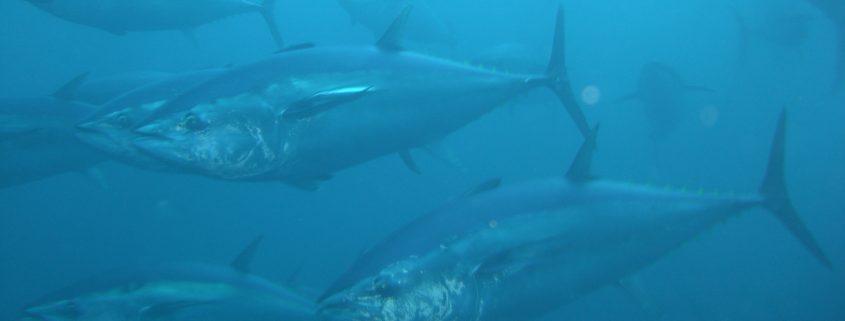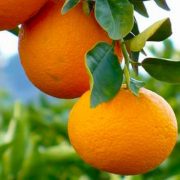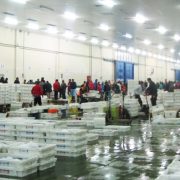Spain presents the capacity to the fishing of bluefin tuna in 2016
The European country will have 3,534 tons of bluefin tuna to capture this season. The fishing opportunities for the Spanish fleet increased by 19.53%, 577 more than in 2015. All types of fishing, comprising 315 vessels and traps, see this increase reflected tonnes. The modalities of canaries pole-and-catch of artisanal Strait and the Mediterranean, the most artisanal fleets will see increased its share by a greater amount.
The Ministry of Agriculture, Food and Environment (MAGRAMA) has submitted to the European Commission Spain Capability Plan for the fishing of bluefin tuna in 2016, including the names of all participating boats.
These lists all vessels assigned an individual quota, including canaries vessels have a combined market share and make a joint management are included. In this case, all vessels that have been active in the bluefin tuna fishery between 2008, the year in which the distribution of this species was established, and 2015 are related.
Fishing opportunities
Spain will have a total of 3,534.44 tons of bluefin tuna for the whole year 2016, representing an increase of 577 tons, 19.53% more than in 2015, based on the multi-year program agreed in 2014 for the years 2015-2017. This amount will be increased next year 2017 at least 709 more tons.
All forms of active fishing and directed fishing, composed of 315 vessels and traps, will see affected the increase of 19.56% in the fishing availabilities with respect to 2015, which will allow to improve significantly their fishing opportunities and returns
Manoeuvre base
Exceptionally, and taking into account the situation of certain more artisanal fisheries and bycatch, higher allocations from the manoeuvre base, established in current regulations are to be made.
This manoeuvre base had been established to address possible over harvests regarding fishing opportunities allocated to Spain and to the proper management of the fishery in general.
Given the degree of responsibility of the various operators, the adjustment of the final landings from assessed contributions is found, so not overfished are provided, and in order to better manage the fishery, will proceed to the distribution of the fund among the aforementioned fisheries. Thus, the government will be able to assign this season more to those fleets that are not favored by the initial distribution fee.
Thus, the fleet formed by artisanal vessel Strait and the Mediterranean lacking fee, have 30 and 50 tonnes respectively, to disembark and catch, that is, when one piece of bluefin tuna are caught unintentionally when performing normal fishing activities.
Likewise, the sport fishing fleet, which has banned the catch of bluefin tuna, and you can only perform without death Obligation fishery catch and release of alive- copies disembarked up to 9.5 tons of red tuna only in cases in which, even taking steps to ensure the return to life of tuna caught measures not consiguiese. In these cases, and within the aforementioned quota may land the individual bluefin tuna, but can not be marketed.
In the case of sugarcane Canarian fleet, taking it to a historical demand of the sector continues to share settings, allowing landings to 140 tons for this campaign. This represents an increase of 40% compared to the final quota by 2015, and more than 250% compared to the quota initially would correspond.
The first bluefin tuna fishery will be taking place in the waters of the Canary Islands, which will begin in early March, at a date yet to be defined.
Bluefin tuna fishery
The bluefin tuna fishery in the eastern Atlantic and the Mediterranean, one of the most controlled in the world, is regulated by various Ministerial Orders establishing performance standards of this fishery, the specific census of authorized to exercise fishing fleet bluefin tuna, the procedure for the allocation of quotas or the provision of a manoeuvre base.
The annual bluefin tuna campaign involves different operators. In what is known as a directed fishery, formed by those operators who fish the resource directly, the fleet of Northwest Bay of Biscay bait are included, the fleet of pole and line of hand-strait longline fleets and line hand, the line vessels authorized to fish in waters of the fishing area Canario, the purse seine fleet of the Mediterranean and traps. These six groups concentrate the vast majority of catches over 97% of the total.
The rest of the catch is reserved for accidental or incidental catches by fleets formed by artisanal vessel Strait and the Mediterranean, the latter not share at present, and for vessels engaged in fishing.
Source: MAGRAMA













